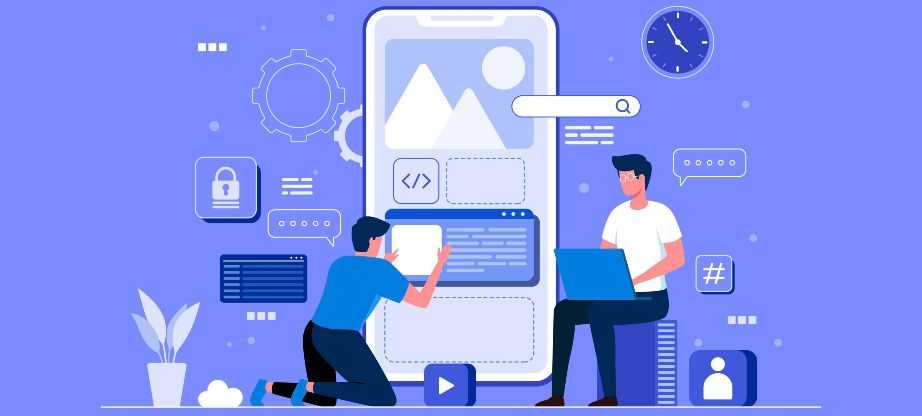7 Excellent Tips to Make Your Web Development Project More Effective
It is not a secret that implementing a new web application or website can be a challenging task. This is because there are numerous factors that have to be taken into account, from understanding user needs and expectations, designing an interface, and coming up with the best technologies to build the app.
Fortunately, it does not have to be so overwhelming, especially if you focus on implementing good practices from the get-go. In this article, you will learn 7 tips to make your next web development project more effective.
1. Think About the User Experience (UX)
Refining a paper prototype or a mockup is cheap in comparison to scrapping a project that users don’t like. Seventy percent of development time should be devoted to planning and design, whereas just thirty percent is spent writing code. A lot of time and effort can be saved in the development phase if you take the time to learn about your target audience and create a website that caters to their needs.
2. Visually Collaborate with Team Members
Visual collaboration is essential for web development projects. It allows teams to work on projects together, visualizing designs and sharing feedback in real-time. This makes the process much smoother and easier, and it also helps to avoid misunderstandings. With visual collaboration tools, projects can be completed much faster and with less frustration. Plus, it’s a great way to keep team members motivated and on track. If you’re looking for a way to improve your web development process, look into a visual collaboration tool to make your projects much easier and more efficient.
3. Use Prebuilt Frameworks
Instead of beginning from scratch when developing a web application, you can construct it on top of a framework that offers a platform for building the application. Not only does this help save time, but it also makes it possible for less experienced programmers to write programs of a higher quality and with fewer errors.
4. Communicate Clearly with the Stakeholders
It doesn’t matter if you’re developing websites or applications for internal business users or for clients from the outside world; one thing stays the same: Maintaining open lines of communication will spare you many hours of aggravation and lost productivity. Not only does it ensure that everyone is on the same page, but it also assists in the early detection of problems and can prevent you from squandering days or even weeks developing features that the client does not want.
5. Work on Sprint Cycles
The productivity of a team can significantly increase when they work in sprints. For instance, I produced this post in short bursts, composing two or three bullet points at a time, then moving on to concentrate on something else for a considerable amount of time before coming back to it later in the day. Working at 10- to 20-minute intervals gives your brain the time it needs to come up with fresh concepts and prevents it from becoming exhausted.
You won’t be able to keep up the same level of productivity if you work for long stretches at a time, and the quality of your output will suffer as a result. Working on a project in short bursts ensures that you will always return to it with a clear head.
6. Try to Re-Use Things Much as Possible
There are quick, accessible, and responsive components available, but it might be challenging to find ones that are a perfect fit for your workflow and the workflow of your team. While doing so, you may find yourself reusing UI elements and patterns from previous projects.
Perhaps you’ve developed the ideal mobile-friendly menu or accessible error handling and an animation-packed contact form.
Make sure they’re well documented so they may be easily used in future endeavors. They’ll develop as you work on them and gain new capabilities. If so, remember to additionally revise the component you’re referencing. If you don’t, you’ll have to rummage through your old project files to locate the exact version of the needed component.
7. Learn to IDE Like a Pro
An IDE is a graphical programming environment that includes all of the necessary tools in a single interface. Make sure your developers have the proper training to make the most of the IDE’s intuitive interface. When developers aren’t familiar with specific features or procedures, chaos can ensue and they won’t be able to get much done.
Tools like plugins and code snippets can be used in tandem with your integrated development environment to boost efficiency. Code snippets automate common programming tasks, while plugins like syntax highlighting make it easier to discover syntax problems. Indenting, refactoring, and autocompleting are just a few of the repetitious activities that can be simplified with the help of a robust code editor.
[Bonus] Focus on Maintaining a Healthy Work-Life Balance
In the name of efficiency and productivity, employers routinely tell workers to put their health and happiness last. The trade-off of working longer hours and less sleep is not worth it.
Developers who work from home need to strike a balance between their job and personal lives, including getting enough sleep. They need to be motivated to maintain a healthy lifestyle and take breaks to re-energize.
Productivity gains can be amplified by adopting healthy lifestyle habits like working out regularly and eating a balanced diet. Involving your developers in physical activity does not necessitate a gym membership. Their emotional and physical well-being may be negatively affected by their prolonged desk work. When you’ve been sitting for more than an hour or two, getting up and moving around can do wonders for your productivity.

